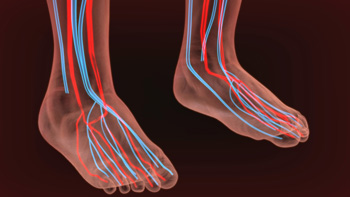Facts About Raynaud’s Phenomenon
Tuesday, 20 December 2022 00:00
If your feet and toes often feel cold, especially when stressed, you may have Raynaud’s phenomenon. While this condition is not inherently dangerous, it can cause discomfort. A common symptom of this circulation disorder is skin discoloration. First, the skin turns white as the flow of blood is restricted. The skin may then turn blue when the blood vessels are affected. Finally, the skin may turn red as blood flow returns. Other symptoms include pain, numbness, and a feeling of pins and needles. Moving the toes may seem difficult too. These symptoms can last a few minutes or up to an hour. To combat the occurrence of Raynaud’s phenomenon it is suggested that you quit smoking and limit the intake of caffeine. In addition, keep your feet warm with heavy socks and exercise them to increase blood flow. Experts suggest that if you first experience the symptoms of Raynaud’s phenomenon under the age of 12 or over the age of 30, you visit a podiatrist for a complete examination. These symptoms may be a sign of an underlying or more serious condition.
While poor circulation itself isn’t a condition; it is a symptom of another underlying health condition you may have. If you have any concerns with poor circulation in your feet contact one of our podiatrists of Family Foot Care. Our doctors will treat your foot and ankle needs.
Poor Circulation in the Feet
Peripheral artery disease (PAD) can potentially lead to poor circulation in the lower extremities. PAD is a condition that causes the blood vessels and arteries to narrow. In a linked condition called atherosclerosis, the arteries stiffen up due to a buildup of plaque in the arteries and blood vessels. These two conditions can cause a decrease in the amount of blood that flows to your extremities, therefore resulting in pain.
Symptoms
Some of the most common symptoms of poor circulation are:
- Numbness
- Tingling
- Throbbing or stinging pain in limbs
- Pain
- Muscle Cramps
Treatment for poor circulation often depends on the underlying condition that causes it. Methods for treatment may include insulin for diabetes, special exercise programs, surgery for varicose veins, or compression socks for swollen legs.
As always, see a podiatrist as he or she will assist in finding a regimen that suits you. A podiatrist can also prescribe you any needed medication.
If you have any questions, please feel free to contact our offices located in Valatie and Albany, NY . We offer the newest diagnostic and treatment technologies for all your foot care needs.



